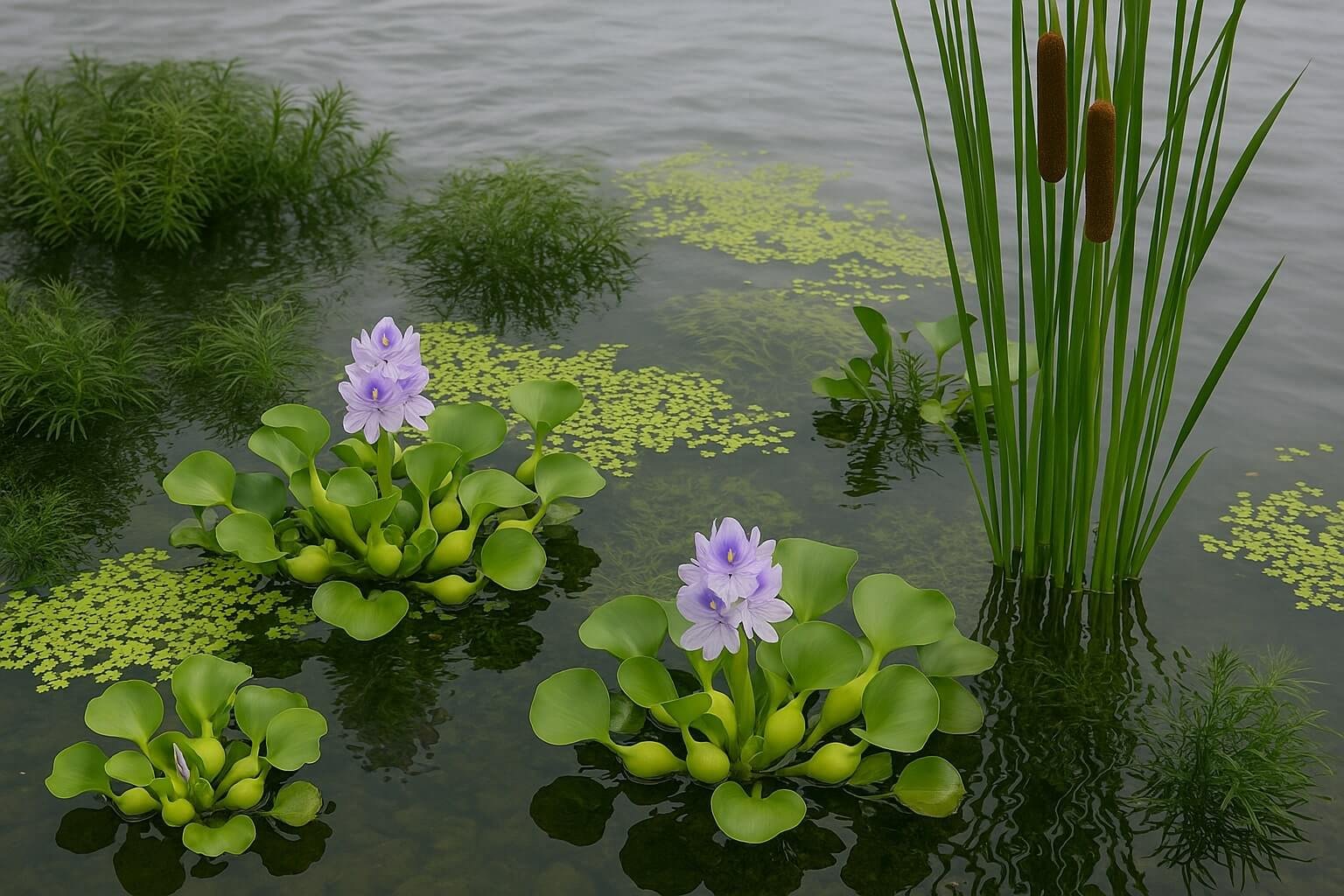Nature’s Clean-Up Crew
Water filtration isn’t just about high-tech systems and chemical treatments. Nature has its own powerful solution—aquatic plants. These green wonders not only beautify ponds and aquariums but also purify water naturally, removing toxins, excess nutrients, and heavy metals. Whether you’re a pond owner, aquascaping enthusiast, or eco-conscious gardener, understanding which aqua plants help with water filtration can transform your water features into thriving ecosystems.
🌱 Why Use Aqua Plants for Water Filtration?
Aquatic plants act as biological filters, absorbing pollutants and releasing oxygen. Here’s why they’re essential:
- Eco-friendly: No chemicals, no electricity—just nature doing its job.
- Cost-effective: Once established, they require minimal maintenance.
- Biodiversity boosters: They support fish, insects, and beneficial bacteria.
- Algae control: By absorbing nutrients, they starve algae of food.
🌊 Top Aqua Plants That Help with Water Filtration
Let’s dive into the most effective aquatic plants for natural water purification:
1. Water Hyacinth (Eichhornia crassipes)
- Type: Floating
- Filtration Power: Absorbs nitrogen, phosphorus, and heavy metals
- Bonus: Suppresses algae growth by blocking sunlight
⚠️ Note: In some regions, water hyacinth is considered invasive. Always check local regulations.
2. Duckweed (Lemna minor)
- Type: Floating
- Filtration Power: Removes excess nutrients like nitrates and phosphates
- Bonus: Rapid growth makes it a nutrient sponge
3. Hornwort (Ceratophyllum demersum)
- Type: Submerged
- Filtration Power: Absorbs ammonia, nitrates, and CO₂
- Bonus: Oxygenates water and provides shelter for fish
4. Water Lettuce (Pistia stratiotes)
- Type: Floating
- Filtration Power: Excellent at removing nitrates and phosphates
- Bonus: Creates shade and reduces algae blooms
5. Cattails (Typha spp.)
- Type: Marginal
- Filtration Power: Removes heavy metals and excess nutrients
- Bonus: Stabilizes pond edges and prevents erosion
6. Amazon Frogbit (Limnobium laevigatum)
- Type: Floating
- Filtration Power: Absorbs organic waste and nutrients
- Bonus: Ideal for aquariums and small ponds
7. Water Iris (Iris pseudacorus)
- Type: Marginal
- Filtration Power: Filters runoff and absorbs pollutants
- Bonus: Adds vibrant color to pond edges
8. Water Sprite (Ceratopteris thalictroides)
- Type: Floating/Submerged
- Filtration Power: Traps debris and absorbs ammonia
- Bonus: Great for aquariums and beginner-friendly
🧪 How Do These Plants Filter Water?
Aquatic plants use a combination of root absorption, photosynthesis, and microbial support to clean water:
- Roots trap sediments and absorb dissolved nutrients.
- Leaves take in CO₂ and release oxygen.
- Microbes on plant surfaces break down organic waste.
Together, they create a balanced aquatic ecosystem that’s self-sustaining and low-maintenance.
🛠️ Tips for Using Aqua Plants Effectively
- Balance plant types: Combine floating, submerged, and marginal plants.
- Avoid overcrowding: Too many plants can block light and reduce oxygen.
- Prune regularly: Remove dead leaves to prevent decay.
- Monitor water quality: Use test kits to track nutrient levels.
🌍 Real-Life Applications
🐠 In Aquariums
- Use hornwort, duckweed, and water sprite for small tanks.
- They reduce the need for mechanical filters and improve fish health.
🏞️ In Ponds
- Combine water hyacinth, cattails, and water iris.
- These plants handle larger volumes and support wildlife.
🚰 In Constructed Wetlands
- Cattails and water canna are used in eco-engineering projects.
- They treat greywater and agricultural runoff naturally.
❓ FAQs About Aqua Plants and Water Filtration
Q1: Can aquatic plants replace traditional filters?
A: In small systems, yes. In larger setups, they work best as a supplement to mechanical filtration.
Q2: Are these plants safe for fish?
A: Absolutely! Most filtration plants provide shelter and oxygen for fish.
Q3: How fast do these plants clean water?
A: Results vary, but noticeable improvements can occur within 2–4 weeks.
Q4: Do I need to fertilize these plants?
A: No. They thrive on nutrients already present in the water.
Q5: What’s the best plant for beginners?
A: Duckweed and water sprite are easy to grow and highly effective.





